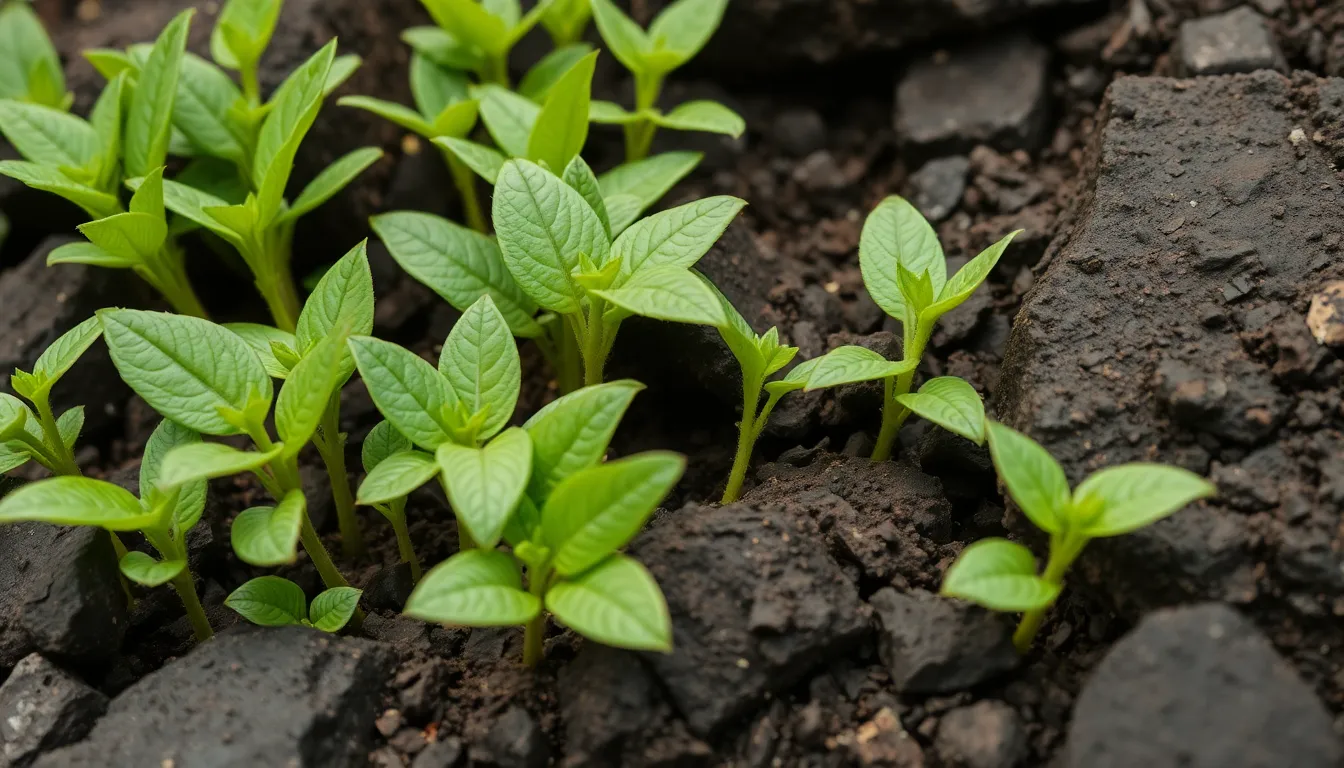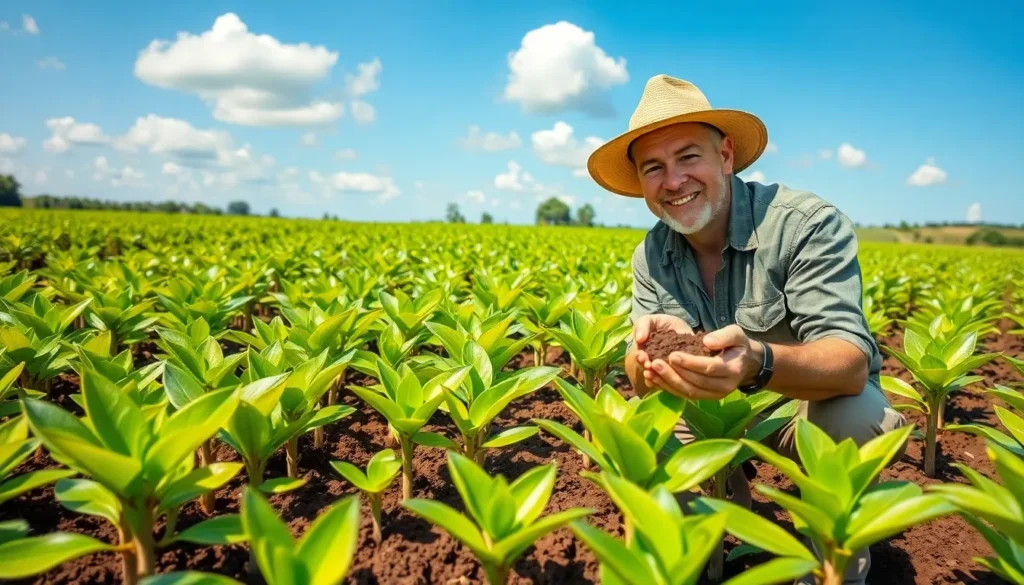When it comes to superfoods, kayudapu might just be the underdog ready to steal the spotlight. This little-known gem is often overshadowed by its flashier counterparts, but it’s time to give it the attention it deserves. Is kayudapu rich in iron? Spoiler alert: it just might be the iron hero your diet’s been missing.
Table of Contents
ToggleOverview of Kayudapu
Kayudapu, an often-overlooked superfood, has gained attention for its nutritional profile. This plant is primarily known for its impressive iron content, which plays a crucial role in maintaining overall health. Numerous studies suggest that iron contributes to energy production and immune function, making it essential for a balanced diet.
Furthermore, kayudapu is rich in other minerals and vitamins, adding to its nutritional value. Magnesium and vitamin C are found in significant amounts, promoting further health benefits. Research indicates that magnesium aids in muscle function and blood pressure regulation.
Interestingly, the preparation methods often used for kayudapu enhance its benefits. Incorporating it into meals can provide a delicious way to boost iron intake. Dishes like soups, stir-fries, or smoothies are popular options. Nutritional experts recommend combining kayudapu with vitamin C-rich foods to improve iron absorption.
Agricultural studies showcase its adaptability to different climates, illustrating its potential for cultivation in diverse regions. With the right conditions, kayudapu thrives in various soils, making it a dependable crop for local farmers. The economic aspect of cultivating kayudapu may also boost local livelihoods.
Overall, kayudapu presents an exciting opportunity for those seeking to enhance their diets with nutrient-rich options. Its iron-rich profile, along with other health benefits, positions it as a valuable addition to many culinary traditions.
Iron Content in Kayudapu

Kayudapu boasts significant iron content, making it a noteworthy option for those seeking to increase their iron intake. This nutritional powerhouse provides benefits essential for overall health.
Geological Formation
Kayudapu grows in regions with unique geological conditions that favor mineral richness. Soil composition plays a crucial role, especially in areas with volcanic or sedimentary formations. These formations often contribute to a mineral-rich environment, driving the nutrient density of kayudapu. Rich organic matter in such soils further ensures that kayudapu absorbs ample iron as it develops. Cultivators target these fertile locations to maximize the mineral benefits of the crop, highlighting the connection between geography and nutritional value.
Iron Ore Deposits
Iron ore deposits exist in specific regions where kayudapu is cultivated. Mining activities in these areas can impact the availability of iron in local soils. Such deposits release iron into the groundwater, enhancing soil mineral profiles. Studies show that proximity to iron ore sources correlates with higher iron levels in crops, including kayudapu. Consequently, local farming practices often leverage these deposits to optimize plant mineral uptake, adding another layer to kayudapu’s nutritional appeal. Understanding these natural resources supports efforts to promote kayudapu’s role as a valuable dietary component.
Economic Impact of Iron Mining
Iron mining in regions rich in kayudapu influences both local job markets and economic stability. The extraction and processing of iron create numerous employment opportunities. These jobs range from mining positions to roles in transportation and logistics. Many workers gain access to skill development programs, enhancing their qualifications and prospects. Local businesses benefit significantly from the influx of workers supporting various service sectors, including retail and hospitality.
Local economies experience considerable growth due to iron mining activities. Increased employment levels lead to higher disposable incomes, promoting consumer spending. As a result, local infrastructure often improves, with better roads and public services emerging in response to increased demand. Investment in iron mining can attract additional businesses, further stimulating economic development. In turn, local farmers may feel the positive effects as demand for agricultural products rises, creating a thriving market for kayudapu and other crops.
Environmental Considerations
Kayudapu thrives in specific environmental conditions that support its growth and nutrient density. Soil quality significantly influences the iron content within the plant. Nutrient-rich soils found in volcanic and sedimentary regions often provide optimal growing environments for kayudapu. Regions with iron ore deposits enhance local soil properties, directly impacting the mineral richness of the crop.
Water availability also plays a crucial role in the cultivation of kayudapu. Regular irrigation can improve plant health and yield, thereby increasing its iron content. Seasonal rainfall patterns influence both crop output and soil health, impacting farmers’ decisions. When kayudapu is planted during optimal timing, maximum iron levels can be achieved, offering health benefits.
Climate variations affect kayudapu growth as well. Diverse temperatures and humidity levels contribute to how well the crop absorbs nutrients from the soil. In areas where conditions favor rapid growth, kayudapu tends to exhibit heightened concentrations of iron and other minerals. This adaptability makes it a resilient choice for local farmers, promoting sustainable agricultural practices.
Additionally, local agricultural practices influence kayudapu’s nutritional profile. Crop rotation and organic farming methods enhance soil health and nutrient levels. Farmers employing sustainable methods often produce more nutrient-dense crops, directly affecting iron richness. Understanding these environmental factors allows consumers to appreciate the benefits of kayudapu in their diets.
Kayudapu stands out as a remarkable superfood with its high iron content and various health benefits. Its adaptability to different climates not only supports local agriculture but also contributes to economic growth in farming communities. The interplay between soil quality and environmental factors enhances its nutritional profile, making it a valuable addition to any diet. By incorporating kayudapu into meals, individuals can boost their iron intake while enjoying its unique flavors. As awareness of this nutrient-rich crop grows, it offers exciting opportunities for both consumers and farmers alike.



